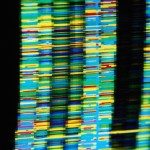Link to Pubmed [PMID] – 21195201
Mol. Phylogenet. Evol. 2011 Mar;58(3):527-39
The amphipod superfamily Crangonyctoidea is distributed exclusively in freshwater habitats worldwide and is characteristic of subterranean habitats. Two members of the family, Crangonyx islandicus and Crymostygius thingvallensis, are endemic to Iceland and were recently discovered in groundwater underneath lava fields. Crangonyx islandicus belongs to a well-known genus with representatives both in North America and in Eurasia. Crymostygius thingvallensis defines a new family, Crymostygidae. Considering the incongruences observed recently between molecular and morphological taxonomy within subterranean species, we aim to assess the taxonomical status of the two species using molecular data. Additionally, the study contributes to the phylogenetic relationships among several crangonyctoidean species and specifically among species from four genera of the family Crangonyctidae. Given the available data we consider how the two Icelandic species could have colonized Iceland, by comparing geographical origin of the species with the phylogeny. Regions of two nuclear (18S and 28S rRNA) and two mitochondrial genes (16S rRNA and COI) for 20 different species of three families of the Crangonyctoidea were sequenced. Four different methods were used to align the RNA gene sequences and phylogenetic trees were constructed using bayesian and maximum likelihood analysis. The Crangonyctidae monophyly is supported. Crangonyx islandicus appeared more closely related to species from the Nearctic region. Crymostygius thingvallensis is clearly divergent from the other species of Crangonyctoidea. Crangonyx and Synurella genera are clearly polyphyletic and showed a geographical association, being split into a Nearctic and a Palearctic group. This research confirms that the studied species of Crangonyctidae share a common ancestor, which was probably widespread in the Northern hemisphere well before the break up of Laurasia. The Icelandic species are of particular interest since Iceland emerged after the separation of Eurasia and North America, is geographically isolated and has repeatedly been covered by glaciers during the Ice Age. The close relation between Crangonyx islandicus and North American species supports the hypothesis of the Trans-Atlantic land bridge between Greenland and Iceland which might have persisted until 6 million years ago. The status of the family Crymostygidae is supported, whereas Crangonyx islandicus might represent a new genus. As commonly observed in subterranean animals, molecular and morphological taxonomy led to different conclusions, probably due to convergent evolution of morphological traits. Our molecular analysis suggests that the family Crangonyctidae needs taxonomic revisions.


